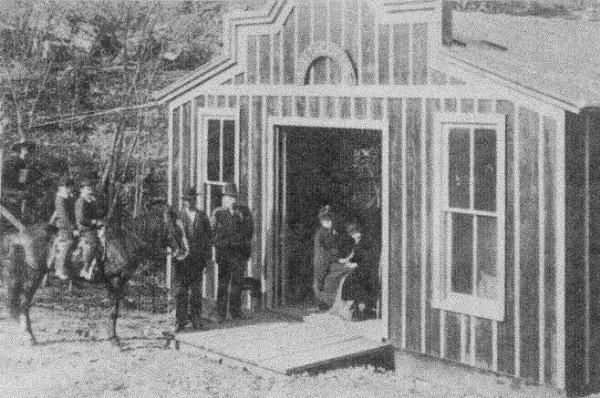Shelta Cave EarthCache
-
Difficulty:
-

-
Terrain:
-

Size:  (not chosen)
(not chosen)
Please note Use of geocaching.com services is subject to the terms and conditions
in our disclaimer.
Shelta Cave Nature
Preserve

This Earth cache will
carry you to Shelta Cave, it is located directly beneath the NSS
national headquarters in Huntsville, Alabama. This is a Day Time
Only Cache.
Shelta cave was the second NSS-owned preserve, purchased in 1967.
Approximately 2500 feet long, the cave has one of the most
outstanding underground ecosystems in North America. It is the type
locality for several species of cave life, three beetles, two
crayfish, a shrimp, and three other arthropods. Many other species
are found in the cave. To this day, Shelta Cave continues to serve
as the NSS' laboratory for cave biology.
Shelta cave has a rich modern day history. The cave was named
after the daughter of Major Henry M. Fuller who owned the farm in
the late 1800's. Fuller bought the farm and tried to develop the
cave into a commercial enterprise. It was opened for walking tours,
boat rides and dancing. Floorboards were built over the limestone
cave floor for the dance hall.

It was purchased by NSS in 1967 and is not open for public tours.
The coordinates will carry you to the gates just out side of the
entrance of the cave.
Shelta cave is part of a large karst cave system that cover North
Alabama region. The forming of karst caves is a complicated process
and it is still a topic of geological research. The basic aspects
are very simple though: rain water containing carbon dioxide CO2
soaks into the ground and is able to dissolve limestone. This is
not a fast process, it can take millions of years and a cave in
essence is continuously growing and changing as water works its
magic in the wondrous world of the under ground.
The Value of the Karst cave environments offer a variety of
scientific and educational opportunities. Karst provides scientists
with a relatively undisturbed window into landform evolution, past
environments, and climate change through the study of cave
morphology and sediments.
The nature of a karst landscape though is a fragile system, it is
a highly valuable, non-renewable resource that can be especially
vulnerable to disturbance. Because of this we need to work hard to
protect them and save this resource for the generations yet to
come.
Other interesting facts about Shelta Cave:
Shelta cave is also home for Gray bats, The bats here are slowly
making a come back. The new fencing placed in 2002 was one of the
latest moves to help encourage bats to return. At one time it was
estimated that about 25,000 bats called this place home. Now only a
handful call this place home but with the conservation plan in
place. The hopes are that this number will increase.
Shelta Cave was the first location in Madison County to have
electric light. aside: not the type of light we are used to now,
but carbon arc lamps
http://en.wikipedia.org/wiki/Carbon_arc_lamp#Carbon_arc_lamp) They
have remnants of one in the NSS office.
Shelta is the fourth cave listed on the Alabama Cave Survey.
While the cave is only 2500 feet long, it is fairly large inside
with 20-30 foot ceilings and between 3-5 acres of lakes during the
seasonal influx of groundwater in the rainy season. The largest
room is approximately 500 x 700 feet and is supported by only one
central column!!!! Seasonally, the cave experiences changes in
groundwater level in the 20-25 foot range.
To receive get credit for this Earth Cache you will need to do the
following.
1 Take a picture of yourself or group at the posted coordinates
near the fence at the cave entrance with your GPS in hand.
2. Send me a email telling me, How wide in your estimation is the
entrance to the cave?
Permission was given for this Earth Cache by: Preserve Manager,
Paul Meyer.

Additional Hints
(No hints available.)